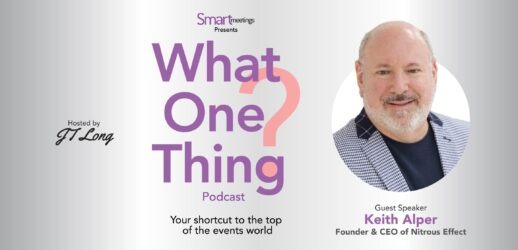Client satisfaction starts from within… conquer your internal virtual events
When we talk about events, it sometimes seems meeting professionals are mostly referring to events their clients or companies host for customers or sales partners, rather than meetings for employees—which can be just as important, if not more so.
“This is a topic that I think warrants attention,” says Brian Ludwig, senior vice president of sales for Cvent. “It gets very little, frankly.” The talk around virtual events, he goes on, has been mainly around external-facing events. “But there are so many marquee, internal events that are important to your organization, to your business,” he says.
Here are Ludwig’s top tips for stellar internal gatherings.
1. Make event registration seamless
Apply the same high standards you probably already do for external events. “Your branding, your color scheme and the content should look great from a desktop environment or from a mobile site that’s not an app,” he says. “Sixty percent of emails are read on mobile devices. Make it super easy for people to consume that content, and then offer them a registration experience straight from there.”
Capturing feedback throughout the process—something Ludwig thinks is often overlooked for internal meetings—really helps move the dial on making these events better over time. “We do this all the time for external, but internally, we cut corners, and we move fast, because we don’t think it’s worth it. But capturing this sort of insight from your employees is critical in understanding their engagement or likelihood to be retained.”
2. Tech is your new venue
“You will no longer need to pay for a hotel, travel, food and coffee, and all those core things that balloon the price on an in-person internal event. Your event technology serves as that venue. It needs to be clean, easy and digestible,” he says.
“And you want to give a personalized experience when someone lands on the virtual attendee hub. So employees can directly share feedback, manipulate their registration, and schedule appointments with colleagues.
“Maybe even create a virtual booth for employees to learn more about certain features and capabilities from the company. This enables a more engaging and collaborative experience beyond just sharing content. A lot of people think about internal events as a way to convey a message to a team. That is important but offering the team opportunities to connect and collaborate with each other is something that’s different than everyday Zoom or team meetings,” he says.
3. Develop interactive sessions
“You can’t have sessions be an hour or two long,” he continues. “Thirty minutes is becoming the new standard, and within that, you want to treat it like a broadcast. You want to think of it like a news report,” Ludwig says. “Seldom do you watch the news for 30 minutes and it’s just one person speaking with one image, right?
“Instead, it’s changing, it’s moving. You’re cutting away. There are different angles. There’s new content on the screen, keeping it fresh, keeping it interesting to keep folks engaged when there are so many distractions from home—another monitor where they’re getting e-mails, dogs, lawnmowers, and all the other things that we’ve come accustomed to dealing with,” Ludwig says.
4. Use engagement scoring

“In times of uncertainty, you want to control what you can control. Motivating your people and delivering your message are two things that you can very easily control,” Ludwig says. He recommends tracking the attendee journey using engagement scoring. As an example, he captures the journey of an attendee who starts out at registration with a request for a meeting with another attendee. “Let’s give her an engagement score of 30,” he says. She then logs into the virtual attendee hub and watches a keynote, and even tweets about it, increasing her score to 70.
She asks a question, attends a session, gives some feedback, goes to the speaker’s list to see who else is going to be presenting and sets up the rest of her schedule. She’s now up to an engagement score of 150.
She has a one-on-one appointment. She attends a training. She fills out a post-event survey, and then she watches an on-demand video. “Now her engagement score is up to 360, and we have a very clear and perfect picture of that employee,” Ludwig says.
This, he notes, can help answer the age-old question: How engaged is my sales team? Managers can then track how that same data correlates against quota attainment. “An employee’s level of engagement may have direct correlation with their output for the month,” he says.




